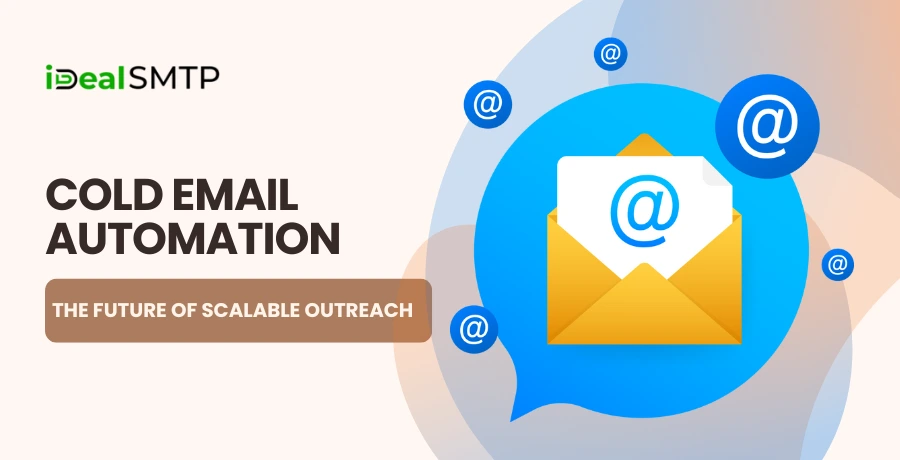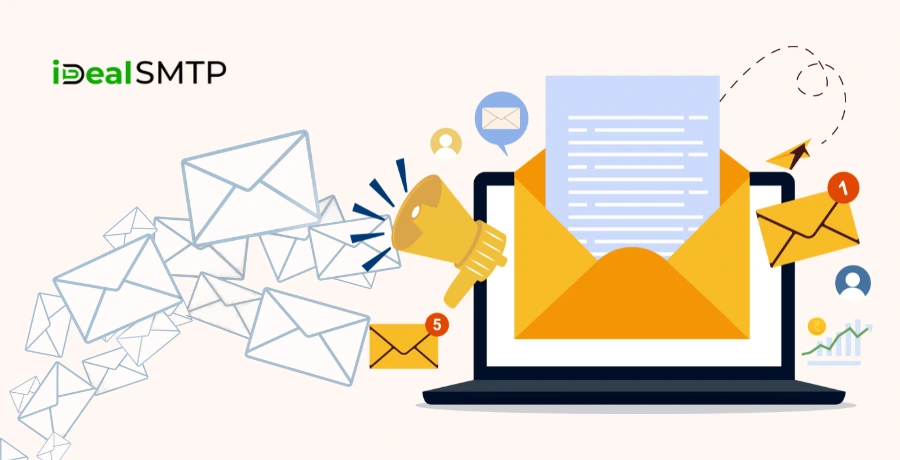Cold emailing has long been a cornerstone of B2B communication, sales outreach, and networking. In a world where personalization meets scale, the concept of cold email automation emerges as the ultimate bridge between the two. Traditional manual outreach methods are not only time-consuming but also inconsistent in execution and tracking. This is where cold email automation steps in.

Cold email automation refers to the process of using software or platforms to send personalized emails to a list of recipients without human intervention during the actual sending phase. It allows businesses and professionals to automate repetitive tasks while maintaining a human touch, making outreach faster, smarter, and more efficient.
Table of Contents
Pricing
| Trail Plan | Standard Plan | Premium Plan | Professional Plan |
| $50 | $145 | $185 | $225 |
| Sending Limit | Sending Limit | Sending Limit | Sending Limit |
| 1000 Emails/Hour | 1500 Emails/Hour | 3000 Emails/Hour | 5000 Emails/Hour |
The Evolution of Automated Cold Emails
In the early days of email, outreach meant typing individual messages and tracking responses in spreadsheets. As email marketing evolved, businesses turned to bulk emailing systems. However, bulk emails often lacked personalization and got flagged as spam.
The need for a balance between mass outreach and personalized communication led to the rise of automated cold emails. Unlike traditional email blasts, automated cold emails are designed to mimic personal one-on-one conversations. They are sent using automation tools that allow customization at scale, using variables like names, companies, pain points, and more.
This evolution has made cold email automation a vital component in the modern marketer’s toolkit.
Benefits of Cold Email Automation
One of the most significant advantages of cold email automation is its ability to save time while improving effectiveness. By eliminating manual tasks such as follow-up emails and contact segmentation, professionals can focus on more strategic activities.
Additionally, automated cold emails help ensure consistency. Every lead receives a message at the right time and with the right messaging, improving the chances of conversion. Cold email automation also enables tracking, A/B testing, and performance analytics, which are critical for optimizing campaigns.
With the right cold email automation platform, users can scale their outreach without sacrificing quality, opening doors to new clients, partnerships, and growth opportunities.
How Cold Email Automation Tools Work
At the core of every cold email automation campaign lies a set of specialized tools. Cold email automation tools are designed to manage everything from contact list uploading and template creation to scheduling emails and monitoring replies.
These tools usually follow a straightforward process. Users import a list of contacts, write email templates with placeholders for personalization, set up the sequence timing, and hit start. The tool then automatically sends out emails based on the sequence schedule.
Modern cold email automation software also includes AI-powered features that help optimize subject lines, analyze recipient behavior, and even suggest response strategies. Integration with CRMs and other productivity tools ensures seamless data synchronization and campaign tracking.
Choosing the Right Cold Email Automation Software
Selecting the right cold email automation software depends on several factors, including the size of your team, target audience, budget, and outreach goals.
Good software should allow deep personalization, provide comprehensive analytics, and offer integrations with your existing CRM and tools. Additionally, features like email bounce detection, spam checking, and warm-up systems ensure that your emails land in the inbox.
Some platforms specialize in high-volume outreach, while others are designed for boutique agencies or solopreneurs. The right tool should not only automate your email sequences but also help you comply with regulations like GDPR and CAN-SPAM to avoid penalties.
Top Features of Cold Email Automation Platforms
A strong cold email automation platform should provide a user-friendly interface and advanced automation capabilities. Key features to look for include:
- Email sequence builder- This allows you to create multi-step email sequences with conditions based on recipient behavior.
- Inbox rotation- Useful for spreading your outreach over multiple inboxes to reduce spam risks.
- Personalization tags- Dynamic placeholders to insert recipient-specific information automatically.
- Smart scheduling- Emails are sent during optimal hours based on time zone and engagement history.
- Performance tracking- Track open rates, click rates, replies, and conversions for every campaign.
Such platforms give users complete control over their cold email outreach automation strategy, making them indispensable in today’s competitive landscape.
Building a High-Performing Email Sequence
Creating a successful email sequence automation strategy starts with understanding your audience. Each email in the sequence should offer value, address a pain point, and lead to a clear call to action.
The first email should introduce the sender and explain why the message is relevant. Follow-up emails should reinforce the message, build credibility, and gently push the prospect toward engagement. Avoid being pushy or robotic, your goal is to build a relationship.
Timing is also critical. Sequences that send too frequently can annoy recipients, while those that wait too long risk being forgotten. Most cold email automation platforms allow you to test different timings and see what works best for your audience.
Email Outreach Automation in Sales and Lead Generation
Sales teams are among the biggest beneficiaries of email outreach automation. In traditional sales outreach, reps spend hours each day crafting emails, following up, and organizing contact information. With automation, these tasks can be executed with precision and at scale.
Sales automation tools can be set up to trigger sequences based on lead actions, like visiting a website or downloading a resource. This contextual outreach increases response rates significantly.
By integrating cold email automation tools with your CRM, you can create personalized touchpoints based on the lead’s journey, segment contacts by behavior, and ensure timely follow-ups.
In lead generation, cold email automation is often the first step of the funnel. When combined with content offers or meeting schedulers, it becomes a powerful engine for pipeline development.
Role of Cold Email Automation in Email Marketing
While email marketing traditionally focuses on newsletters, promotions, and customer retention, cold email automation brings email marketing into the realm of outbound lead generation.

Cold emailing isn’t just for sales, it’s also used by recruiters, PR professionals, marketers, and entrepreneurs. Its principles align closely with email marketing: sending relevant content to a specific audience with a measurable objective.
Many modern email marketing campaigns incorporate cold outreach as part of their funnel. For instance, a SaaS company may use cold outreach to drive free trial signups, then use marketing automation to promote those users toward conversion.
By using cold email automation software alongside your email marketing platform, you can create a holistic strategy that covers both outbound and inbound outreach.
Cold Email vs Warm Email vs Email Marketing Automation
It’s important to distinguish between cold email automation, warm emails, and email marketing automation.
Cold Email Automation
- Sent to prospects with no prior interaction.
- Requires high personalization and precise timing.
- Focuses on initiating contact and starting conversations.
Warm Emails
- Sent to leads who have already shown interest (e.g., webinar sign-ups).
- Aims to nurture prospects who are familiar with your brand.
Email Marketing Automation
- Targets existing subscribers and customers.
- Sends ongoing content, offers, and updates.
- Designed to maintain engagement and drive repeat actions.
Key Takeaways
- Each type of email has a different strategy and goal.
- Tools may overlap, but use the right platform for the right purpose.
- Avoid using bulk marketing platforms like iDealSMTP for cold outreach, as it can hurt your email deliverability.
Best Practices for Cold Email Automation Success
To succeed with cold email automation, your campaigns need to be both strategic and compliant. Always research your prospects thoroughly to ensure your message is relevant. Avoid spammy subject lines and deceptive practices.
Keep your emails short and conversational. Overly formal language or long-winded pitches can reduce engagement. A clear, compelling call to action encourages replies, whether it’s scheduling a call or responding with feedback.
Most importantly, respect unsubscribe requests and keep your contact lists clean. High bounce rates or spam complaints can damage your sender reputation and reduce deliverability.
Regular testing and optimization are also essential. Try different email copy, subject lines, and sequence lengths to see what resonates best with your audience. The beauty of cold email automation is that it gives you the data you need to continuously improve.
Avoiding Spam Filters in Cold Email Campaigns
A common challenge with automated cold emails is avoiding spam filters. Even the most perfectly written email won’t work if it lands in the spam folder.
To improve inbox placement, start by warming up your sending domain. This involves gradually increasing sending volume while maintaining engagement to build a strong sender reputation.
Use dedicated tools to verify email addresses before sending. This reduces bounce rates and signals that you’re a responsible sender. Avoid spam trigger words and excessive formatting.
Make sure your SPF, DKIM, and DMARC records are properly set up. These email authentication protocols help providers verify your identity and increase trust in your emails.
Finally, always send from a reputable cold email automation platform that prioritizes deliverability.
Compliance and Ethical Considerations
Compliance is a crucial part of any cold email automation strategy. Laws like GDPR in Europe and CAN-SPAM in the United States place strict requirements on how and when you can email prospects.
You must include a clear opt-out option and provide accurate contact information. Emails should be honest, relevant, and sent only to business addresses or prospects with a legitimate interest.
Many cold email automation tools offer built-in compliance features, such as automatic opt-out handling and email suppression lists. Using these features ensures you stay on the right side of the law and maintain your brand’s reputation.
Ethically, cold outreach should aim to add value to the recipient, not just benefit the sender. A thoughtful approach to cold emailing can create long-lasting professional relationships.
Real-World Use Cases of Cold Email Automation
Cold email automation is used across industries. In tech, startups use it to attract early users or investors. In recruitment, hiring managers reach out to passive candidates. In consulting, professionals use it to pitch services to potential clients.
Agencies leverage cold email automation software to scale lead generation for clients, often running multiple campaigns simultaneously. PR firms use it to contact journalists with personalized pitches.
The flexibility of email automation means it can be tailored to nearly any use case, as long as the outreach is relevant and respectful.
Integrating Cold Email Automation with Other Tools
To maximize the impact of email outreach automation, it’s essential to integrate it with other tools in your marketing and sales stack.
CRM integrations help you manage leads, track conversations, and record outcomes. Tools like Calendly can be embedded into emails to schedule calls effortlessly. AI writing assistants can help personalize messages at scale.
Some platforms offer native integrations, while others work through tools like Zapier. Either way, these integrations enhance your workflow and ensure no opportunity slips through the cracks.
The Future of Cold Email Automation
As AI and machine learning continue to evolve, cold email automation tools are becoming smarter and more intuitive. Future platforms will be able to craft emails based on website behavior, social media activity, and even real-time data signals.
Hyper-personalization will become the norm, with AI generating unique messages tailored to each recipient’s interests and pain points. Predictive analytics will guide email sequence timing and content, increasing engagement and conversion rates.
Automation will also expand into multichannel outreach, combining cold emails with LinkedIn messages, SMS, and even voice drops to create a unified outreach strategy.
The future of cold email automation is about more than just efficiency, it’s about relevance, context, and connection.
Conclusion
Cold email automation is not just a convenience; it’s a necessity. It empowers individuals and organizations to scale their outreach, personalize their messaging, and optimize every step of their email journey.
With the right strategy, software, and mindset, cold email automation can open doors, build relationships, and drive meaningful growth. From startups and sales teams to agencies and recruiters, those who embrace cold email automation platforms are setting themselves up for success in the new era of communication.
Whether you’re just starting or looking to improve your existing outreach, investing in the right cold email automation tools is one of the smartest decisions you can make in your email marketing journey.
Looking to supercharge your cold email campaigns? iDealSMTP offers a powerful and reliable cold email automation service designed to maximize deliverability, personalize outreach at scale, and help you convert leads faster. Try iDealSMTP – your smart solution for automated cold emails.
FAQs
Here are the top FAQs on Cold email automation:
1. What is Cold Email Automation?
Cold Email Automation is the process of sending emails to prospects automatically using software tools.
2. Why should businesses use Automated Cold Emails?
Automated cold emails save time and increase productivity.
3. Are Cold Email Automation Tools legal to use?
Cold email automation tools are legal when used by regulations like GDPR and CAN-SPAM. It’s important to only contact people with legitimate interest, include opt-out options, and avoid spammy tactics. Ethical outreach ensures both legality and better results.
4. What features should a good Cold Email Automation Platform have?
A quality cold email automation platform should offer key features such as email sequence automation, advanced personalization, A/B testing, analytics, inbox rotation, and CRM integration. These features ensure scalable, efficient, and effective outreach.
5. How does Email Outreach Automation differ from regular email marketing?
Email outreach automation is used to connect with new prospects who’ve never interacted with your brand, while traditional email marketing often focuses on nurturing existing subscribers or customers.
6. Can you personalize automated cold emails?
Cold email automation software allows for deep personalization using data fields like first name, company, or job title. Advanced tools even allow personalized lines or custom intro messages to make each email feel human-written, boosting reply rates.
7. How many emails can I send daily using cold email automation software?
To avoid spam filters, it’s advised to send a maximum of 100–150 cold emails per sender per day. Many cold email automation tools allow rotating between multiple email accounts, effectively scaling the outreach while maintaining deliverability.
8. What are the best Cold Email Automation Tools in 2025?
Popular tools include Instantly.ai, Mailshake, Smartlead, Lemlist, and Woodpecker.
9. How important is Email Sequence Automation?
Email sequence automation is crucial because most replies happen after follow-up emails. A well-structured sequence ensures your message doesn’t get lost and demonstrates persistence. Automated follow-ups drastically improve your outreach success rate.
10. What’s the difference between CRM and Cold Email Automation Software?
CRMs are databases for customer management, while cold email automation software is built for outbound communication.
11. Do Cold Email Automation Platforms affect deliverability?
Yes, tool setup directly impacts email deliverability.
12. Is Cold Email Automation suitable for B2B marketing?
Cold email automation is widely used in B2B marketing to reach decision-makers at scale. By crafting personalized outreach campaigns and automating sequences, B2B companies can generate qualified leads more efficiently than through manual outreach.







